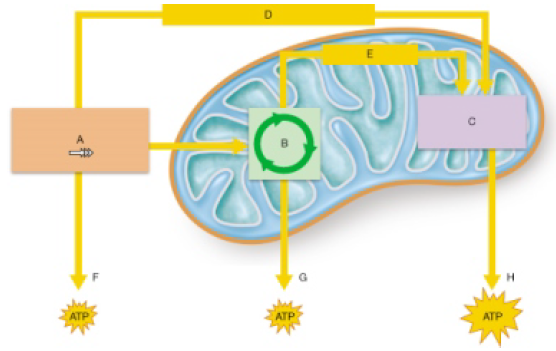When using a microscope to view cells you obtained from scraping under your fingernails, you notice that the cells lack nuclei; therefore, you conclude that the cells must be a type of ________ cell
A) plant
B) eukaryotic
C) fungal
D) prokaryotic
D
You might also like to view...
Cells capable of producing all the various types of cells of the adult are called ____ cells
a. semipotent
b. pluripotent c. totipotent d. multipotent e. differentiated
Glycolysis
a. occurs in the mitochondria. b. happens to glucose only. c. results in the production of pyruvate. d. occurs in the cytoplasm. e. occurs in the cytoplasm and results in the production of pyruvate.
Which of the following is a common feature of the processes indicated by both letters D and E?

a. movement of organic food molecules between catabolic pathways
b. movement of phosphate groups associated with ADP
c. movement of hydrogen atoms associated with NADH
d. movement of pyruvic acid into the mitochondria
You are studying a mini-ecosystem that you created from samples of lake water, plants, and sediment. Your teacher tells you to drop about 10 sesame seeds on the top of the water because they will attract some interesting organisms. One week later, you
see that the seeds are surrounded by white fuzz that is extending off of the seeds, and you conclude that the decomposing seeds have been colonized by A) diatoms. B) brown algae. C) unikonts. D) water molds.